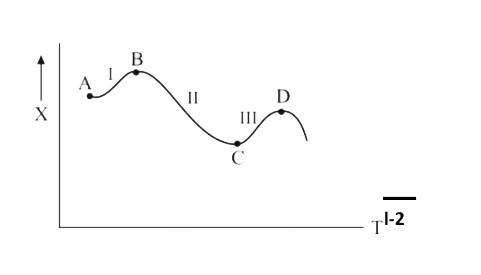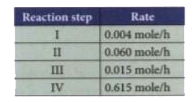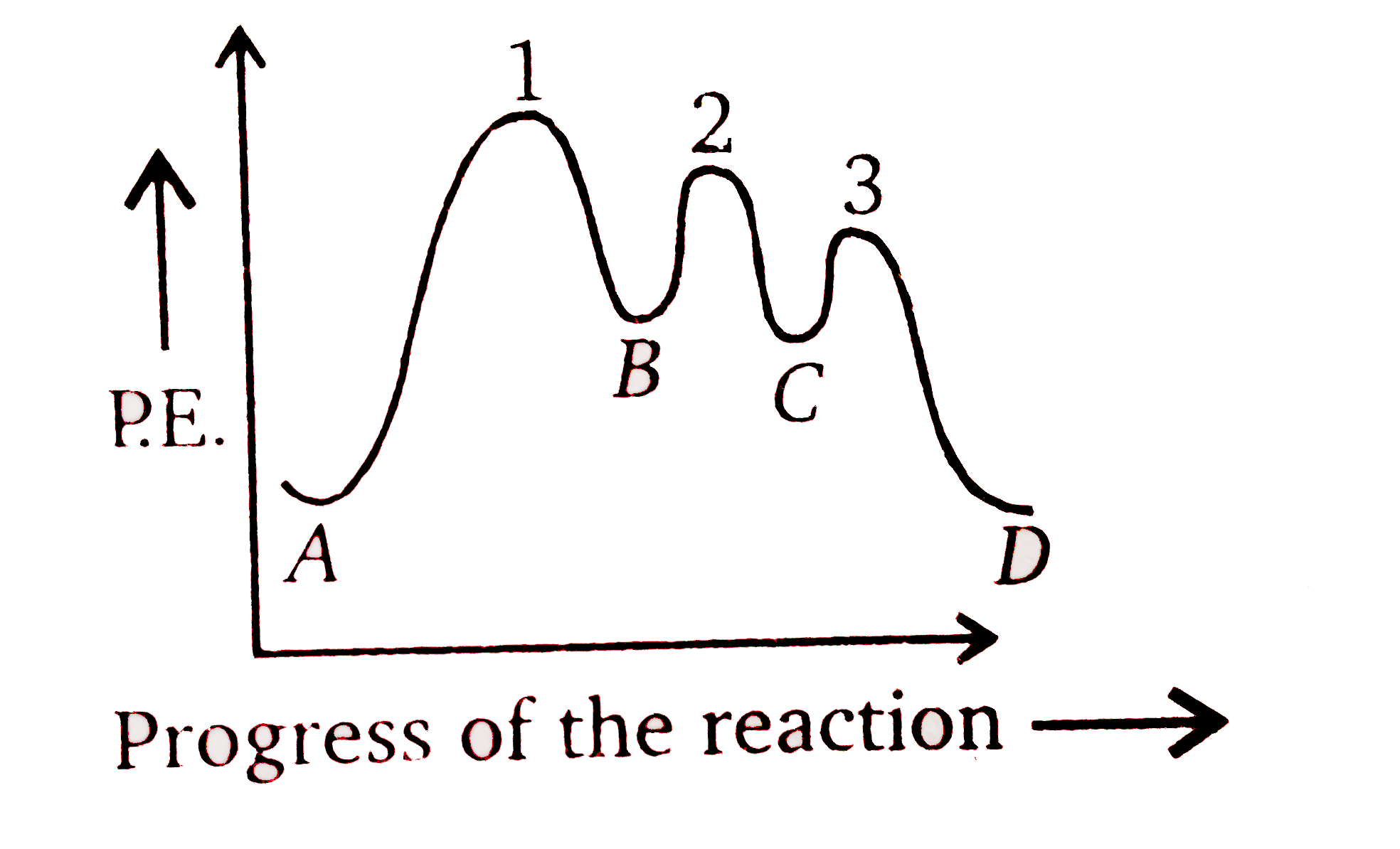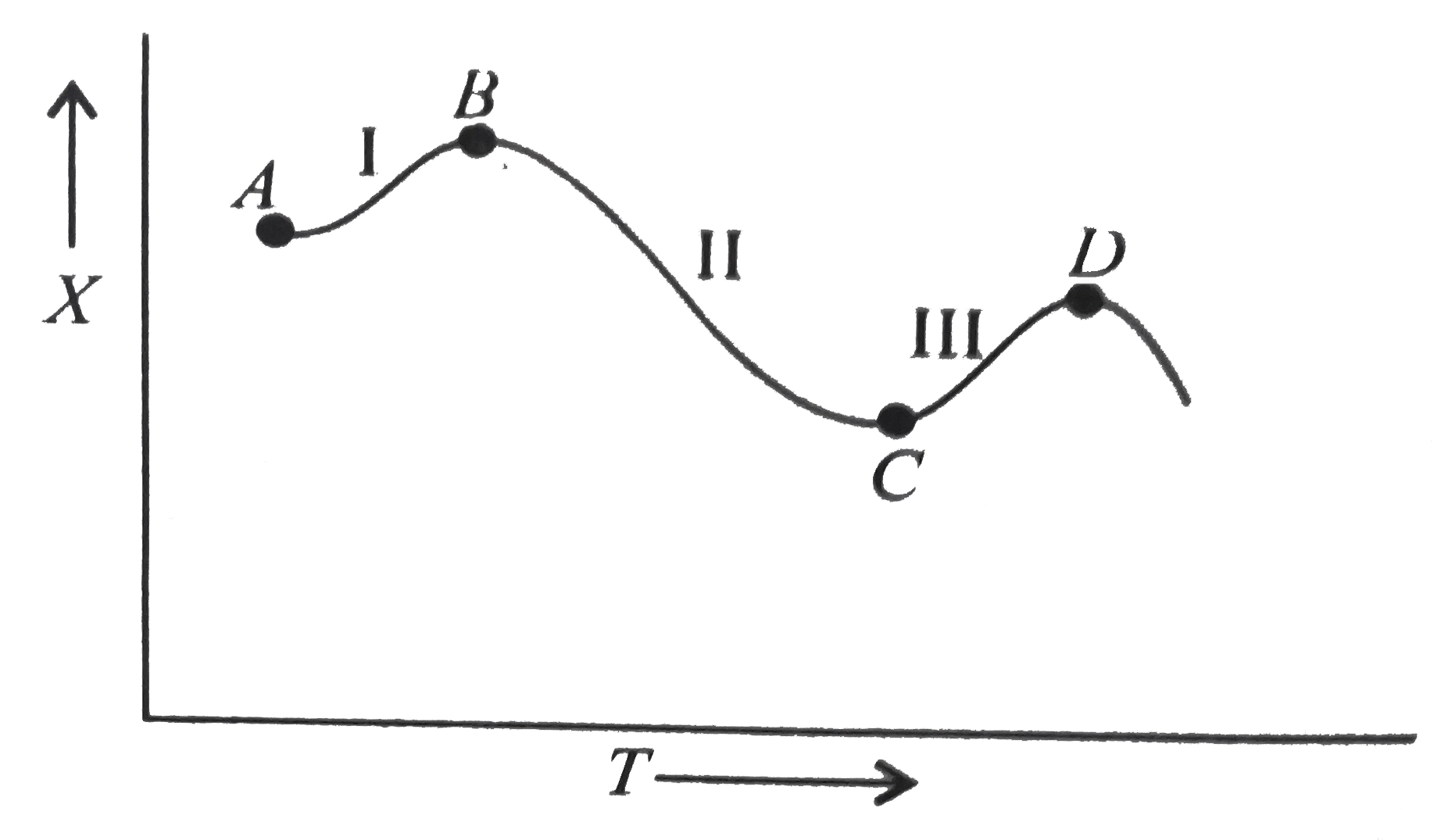Given the hypothetical reaction mechanism
and the data as :

The rate determining step is
Step I
Step II
Step III
Step IV
The correct Answer is:A
The slowest step is the rate determining step . Formation of B (i.e., step I) is the slowest step, therefore, step I is the rate determining step .
Topper's Solved these Questions
- CHEMICAL KINETICSBOOK - ERRORLESSCHAPTER - CHEMICAL KINETICSEXERCISE - NCERT BASED QUESTIONS (Collision Theory, Energy of Activation and Arrhenius Equation)
54 Videos
- CHEMICAL KINETICSBOOK - ERRORLESSCHAPTER - CHEMICAL KINETICSEXERCISE - NCERT BASED QUESTIONS (Photochemical Reaction)
4 Videos
- CHEMICAL KINETICSBOOK - ERRORLESSCHAPTER - CHEMICAL KINETICSEXERCISE - Assertion & Reason
6 Videos
- CARBOXYLIC ACIDSBOOK - ERRORLESSCHAPTER - CARBOXYLIC ACIDSEXERCISE - Assertion & Reason
5 Videos
- CHEMISTRY IN EVERYDAY LIFE BOOK - ERRORLESSCHAPTER - CHEMISTRY IN EVERYDAY LIFE EXERCISE - Assertion & Reason
4 Videos
Similar Questions
In the sequence of reaction
AK1−−→BK2−−→CKc−−→D,K3>K2>K1 then the rate determining step of the reaction is
View SolutionFor the following reaction through stages I, II and III AI−−→BII−−→CIII−−→D
quantity of the product formed (x) varies with temperature (T) as given. Select correct statement:
View Solution
Knowledge Check
Given the hypothetical reaction mechanism AI−−→BII−−→CIII−−→DIV−−→E and the rate as

Rate determining step isAstep IBstep IICstep IIIDstep IVGiven the hypothetical reaction mechanism
 E and the rate as The rate determining step is Astep IBstep IICstep IIIDstep IV
E and the rate as The rate determining step is Astep IBstep IICstep IIIDstep IVEnergy profile digaram for an exothermic reaction A1−−→B2−−→C3−−→D, is given below .

the rate determining step of the reaction is:AA→BBB→CCC→DDCan not predict

Consider the above reaction and answer A to E.
Which step is rate determining step?
View SolutionFor the following reaction through stages I, II and III
AI−−→BII−−→CIII−−→D
quantity of the product formed (x) varies with temperature (T) as given. Select the correct statement.

View SolutionIf 1A:1B:1C=2:3:4, then what is the ratio of A:B:C ?
View SolutionWhich C-atom is the most electronegative in this structure IIICH3−IICH2−C≡ICH
View SolutionWhich C-atom is the most electronegative in this structure ?
IIICH3−IICH2−C=ICH
View Solution
